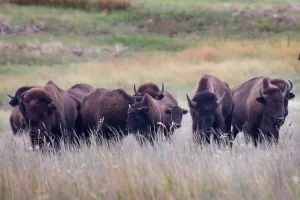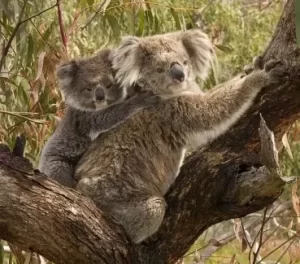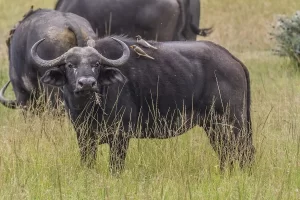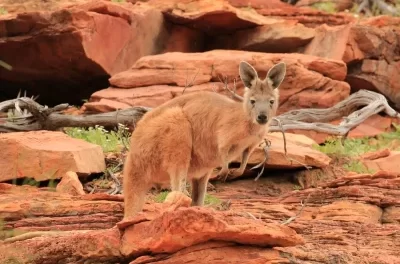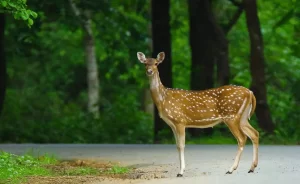American bison is a large ungulate mammal that once roamed North America in vast herds. The color of its fur varies in the front and back of its body and is different shades of brown. Bison is hunchbacked and it has a long beard on its chin. The forehead is wide and narrow while the neck is short. Hind legs are smaller than front legs, making up a scarp from humpback to tail. Length of hair differs in front and rear, especially in males: front hair is significantly longer than rear hair. Horns of bison are black, bent inward withal upward and pointed.
Get full knowledge about American Bison with the help of Priitsh Kumar Halder’s article.

American bison
Two subspecies or ecotypes have been described: the plains bison (B. b. bison), smaller in size and with a more rounded hump, and the wood bison (B. b. athabascae)—the larger of the two and having a taller, square hump. Furthermore, the plains bison has been suggested to consist of a northern plains (B. b. montanae) and a southern plains (B. b. bison) subspecies, bringing the total to three. However, this is generally not supported. The wood bison is one of the largest wild species of extant bovid in the world, surpassed only by the Asian gaur. Among extant land animals in North America, the bison is the heaviest and the longest, and the second tallest after the moose.
Distribution
In the past, a huge number of bison thundered North America from Mexico to Alaska. Then, mass killings of these impressive animals led to their total extermination from the main area of their habitat. However, bison survived and currently they live primarily in Canada and the western part of the USA, usually in protected areas and national parks.

Range of American bison
American bison prefer to inhabit river valleys, prairies, and plains. Typical habitat is open or semiopen grasslands, as well as sagebrush, semiarid lands, and scrublands. Bison also graze in hilly or mountainous areas where the slopes are not steep.
Habits and Lifestyle
American bison is diurnal, being active all day long. They are usually relatively passive during the day, becoming particularly active at dusk and dawn. They spend a lot of time cleaning the fur or grooming: they rub their head, sides, and necks against trunks of trees. Bison are able to be constantly on the move, passing long distances as long as there is food. Cows, female bison, are leaders of family groups while males stay separate, creating small groups or living solitarily.

Group of American bison
As the mating season comes, males join female groups. Bison like rolling, weltering, and rubbing against the ground. Wallows are recesses – dust bowls with no vegetation, having circular form, formed as a result of bison’s wallowing on the ground.
Diet and Nutrition
Bison are herbivores (graminivores) and, more specifically, grazers, chewing grass all year round. However, in absence of grass, they eat other greenery found in the area such as sagebrush. The presence of water is another important component of their life: they can’t last long without a source of water.
Mating Habits
Bison are polygynous, meaning that a dominant male, or a bull, mates with a group of females.

American bison – feeding
The season for breeding takes place in summer, from June to September while the gestation period lasts about 285 days. A female can give birth to a single calf each season.
Newborn calf weight about 15-25 kg. To give birth, bison females choose shelter, a distant place far from the herd. Protection of calf lies on the shoulders of females whereas males don’t take part in this process.
Babies are breastfed for 7-8 months and weaned when they are one year old. Males reach sexual maturity at the age of 3 years and females – from 2 to 3 years.
Population
Population threats
The most notable threats to the population of this species as a whole are long-time persecution of bison from their habitat; slow growth of population in closed and protected areas; genetic manipulation in commercial purposes; hybridization and back crossing of bison and other cattle as well as between different bison subspecies; natural limiting factors in conditions of reservations; and the possible threat of depopulations of bison because of its wild populations’ carrying cattle deceases; continuous culling of bison in order to preclude brucellosis and bovine tuberculosis infection.

American bison – with baby
Population number
According to the IUCN Red List resource, the total population size of the American bison is around 31,000 individuals in 68 conservation herds in North America. The total wild population of the species is estimated to be between 11,248 and 13,123 mature individuals in North America. Currently, the American bison is classified as Near Threatened (NT) on the IUCN Red List but its numbers today are stable.
Ecological niche
Bison was an important component of the flatlands ecosystem in its habitat. When grazing, the animal thrusts its hooves into the soil, thus fertilizing it. Plains, grazed by bison, were inhabited by prairie dogs, protecting them against predators due to being shorter and thus providing a better view to the surrounding area. Corpses of bison were a delicacy for scavengers while their meat was the main source of food for the local population of wolves and humans. Bison fertilized plains of the habitat thus becoming predecessors of farmers.
Fun Facts for Kids
- Dense coat of bison protects it from rough elements of the American plains. In winters the coat becomes solid and even thicker, so that bison are seen with snow on their backs, not melting due to their coats isolating their warm skin from the outer surface.
- The groups that bison create are called obstinacies, gangs, or herds.
- Hunch on its back is nothing but a bunch of muscles. The hunch also helps bison to move into the snowpack.
- Bison is an excellent jumper, able to jump up to 6 feet off the ground.
- Bison have a heightened sense of hearing, being able to identify big objects from a 1 km distance and moving objects – at a distance of 2 km.
- Along with jumping, bison are excellent in running and swimming.
- Newborn calves start walking and running a few hours after being born.
Reference
https://animalia.bio/american-bison?environment=331

